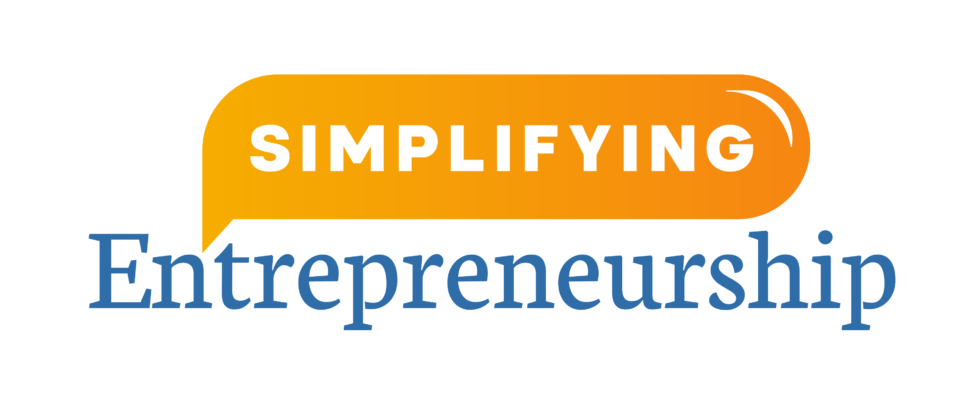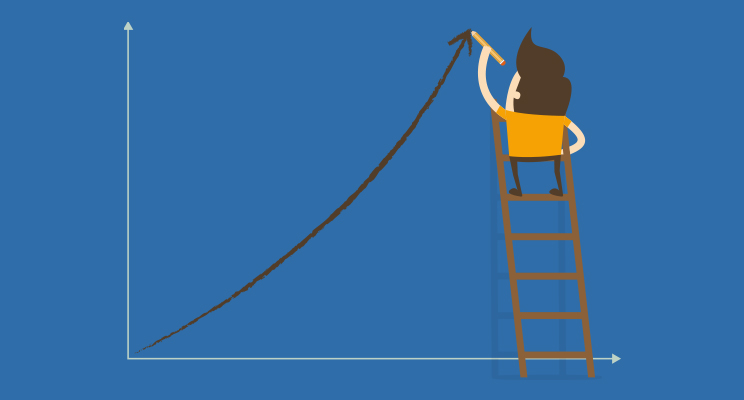Easier said than done, right? I’ve never met an entrepreneur whose goal wasn’t to grow their business in some way. Even if they didn’t want to expand their offerings, they still wanted more revenue. Better yet, they wanted to earn money while working less. That freedom is the whole point of running your own business!
To achieve that freedom, eventually, you’ll want to scale up. That could mean taking on more clients, opening a new location, or simply making more sales. Whatever it means for you, scaling up can be tricky.
Here’s what I’ve learned about scaling your business and the pitfalls to avoid.
Scaling ≠ Spending
Once your business has been running for a while, you should have a clear picture of how much it costs to run that business. One of the biggest factors in scaling is your cost-per-acquisition. That’s marketing lingo for “how much you pay per customer.”
So what happens if you want to get a lot more customers? Ideally, your cost-per-acquisition doesn’t balloon along with your customer base.
Some business owners try to scale by simply offering more products or services. Or perhaps they open a new location. That sounds ideal until you look at the logistics. Will you generate enough revenue to justify an increase in rent, inventory, staffing, etc.? Is there a market for your additional offerings?
See, scaling really isn’t about doing (or spending) more. We call it scaling because it’s like scaling up a picture. You keep the same proportions and imagery, but the scope is larger. The picture is easier to see.
That should be your goal in scaling your business. Ideally, you benefit from growth while optimizing your costs. In some aspects, you may even spend less while earning more. That’s the dream!
To Scale or Not to Scale…
If you’ve read some of my articles about the 5 Ps, you know that your business’s success ultimately comes down to your promise. So, any decisions you make for growth should stem from that promise.
Scaling up by adding more products? Do those products align with your promise?
Want to add a new location? That will require more people. Do they share the values expressed in your promise?
Scaling is ultimately about boosting your profit, and earning more isn’t the only factor in profitability. You also want to avoid spending more — or at least minimize your spending — to scale up. Better yet, what if you could spend less and still earn more?
It’s like scaling up that picture. You’re simply making the business larger and clearer rather than taking a new photo.
Scaling as a Marketing Activity

When we talk about scaling, we usually must talk about marketing. You’re trying to find new/more customers, you’re promoting new offerings, or both. While marketing is crucial to scaling up, it can also be an obstacle.
Here are a couple of marketing principles that perfectly illuminate common problems with scaling.
First, leads are way easier to get than paying customers. Unfortunately, they’re also much more expensive. Some business owners try to scale up by spending tons of money on PPC ad campaigns. That may fetch you a ton of leads but not too many customers.
Second, previous customers are much less expensive to convert than first-time customers. They’re also more likely to purchase from you again — and refer their friends. So, one of the most cost-effective ways to scale your business is to tap into that pool of people. Because it’s more affordable to target those customers and get referrals, you can offer more while spending less on marketing.
In sum, your marketing and scaling strategies must go hand-in-hand. One does not replace the other.
Getting tons of new customers sounds great in theory, but it’s expensive and time-consuming. Many business owners have dropped thousands on advertising rather than tapping into their existing pool of leads to scale their enterprise.
You must shift your marketing toward the deeper end of the customer journey. People will always come back for a great experience. Just think about the people who go to Disney World every year (or month) even though not much is new there!
If people are eager to buy from you again, a new offering may be much more profitable than brand-new leads.
Scale Your Business, Scale Your Processes
I talked about Promise, People, Products, and Profits, but there’s one more P: Process. This is the double-edged sword of scaling up.
Scaling up inevitably involves new, longer, or trickier processes. Who’s going to handle all those new leads who come in? How will you coordinate staff and inventory across two locations?
At the same time, scaling up is more achievable when you optimize your processes. If it’s a complete chore to find and onboard clients, you’re probably not able to scale up — unless you plan to work 24/7, which was likely not part of your entrepreneurial goals.
If you can streamline and automate your processes, you’ve instantly saved time and money. That makes your business more profitable — and easier to scale up.
As I always say, simple is better. Simplicity means reproducibility. What if you could grow your revenue not by making more sales per se but by boosting your average customer value? That’s where automated processes such as upsells and cross-sells come in.
Scenario #1: You get a lead from a marketing campaign. Your sales rep talks to them. They make a small purchase, but then your marketing/sales team has to hunt them down again in the future.
Scenario #2: You get a lead. Before your rep even talks to them, they get valuable content to warm them up. They easily make a purchase, which results in automated follow-up emails with another nice offer.

Scenario #3: You get a lead. They’re automatically shown relevant content and products as they go through your funnel. By the time they check out, they’ve loaded up their cart. You end up with a higher average purchase value and more revenue without having to re-nurture that lead.
Scenarios #2 and #3 make it easier to scale thanks to automation. Of course, you’ll still need a human touch. But the key is to streamline the tedious parts so you can truly fulfill your brand promise and make it easier for customers to buy.
That’s how Disney World works: everything is designed to be the most magical place on Earth. The tough parts are automated and the fun parts are easier to get. And many people will gladly hand over money for that!
Wrapping Up
So, before you start scaling up your business, consider your best source of sustainable revenue. Should you sell more products, attract more customers, or provide more value to each customer? In most cases, it’s the last one.
When you uphold your brand promise, you gain people’s trust. That means they’re much more likely to keep coming back and refer their friends. That boosts your revenue while sparing your operations budget — and your sanity!
Your processes, people, and product are all part of your growth. By balancing them well, you can scale up more cost-effectively. You’re preserving the picture but making it easier to see, rather than wasting resources on new pictures. And that, in turn, makes your profit more sustainable and your freedom more available.
This article is inspired by an episode of the Simplifying Entrepreneurship podcast in which I chat with Alejandra Slatapolsky, a business strategist and financial services marketer.
You can watch the uncut video of our conversation on youtube as well





0 Comments